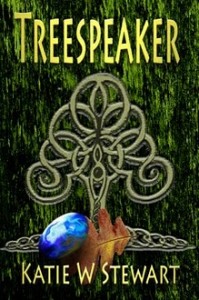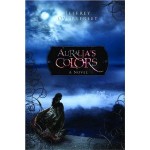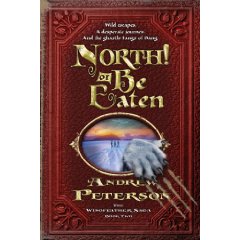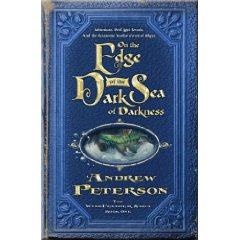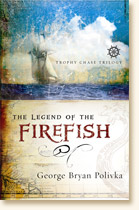Treespeaker by Katie W. Stewart
Ebook published by Katie W. Stewart, 2011
Genre: Fantasy, suitable for 12 and up
Jakan has been a leader of his people, the Arrakeshi who live peacefully together in a forest. Specifically, he’s the treespeaker of his tribe–the one who communes with the benevolent spirit of the forest, Arrakesh, and tells the others what they need to do. It is Arrakesh who has set up the Veil protecting them from the Carlikans nearby who have cut down their own forests and engage in plenty of petty thievery, not to mention slavery.
Jakan has a terrible vision of disaster to come at the hands of a tall stranger. Nearly immediately the tall stranger shows up, having somehow passed through the Veil from Carlika. Soon Jakan’s wife is dead, and the powerful stranger has convinced the tribe to cast Jakan out.
Jakan starts on an impossible journey, because Arrakesh has commanded him to find Varyd, someone he knew 20 years ago. This person lives in Carlika, and not close by. Why does he need to find Varyd? He doesn’t know. Nor does he know how he will survive leaving the Veil, because treespeakers, bound to the forest, die when they leave. And finally, his treespeaker ability to commune with Arrakesh has left him. He’s just like everyone else now, asking Arrakesh for help and wondering whether he will receive it.
A way is found to keep him alive on the trip and he sets out, leaving his son Dovan to cope with the powerful stranger who is desecrating sacred sites in the village. Will Jakan find Varyd, or die first? Will Dovan, now secret treespeaker for the village, be able to protect the people and survive?
I liked this book. It’s got a good plot line, always thickening and leading the reader forward, and the characters are complex and conflicted. I found Arrakesh and Carlika to be believable places.
The author has tagged this book as Christian fiction. If it is Christian fiction, the one thing that bothered me is that the characters believe Arrakesh, the God-spirit, to be the God for the Arrakeshi people and not the Carlikans. Of course we know this is not true of the one true God. But I am thinking this belief on the part of the Arrakeshi people may change over the course of future books!
This book is a 99-cent ebook published by the author, who obviously had some editing done to her manuscript–I didn’t see any errors, and the plot works well. I wonder whether this will be the way of the future, opening up the market to many more readers. The author is an Australian, by the way.
Website: http://treespeaker.blogspot.com/

